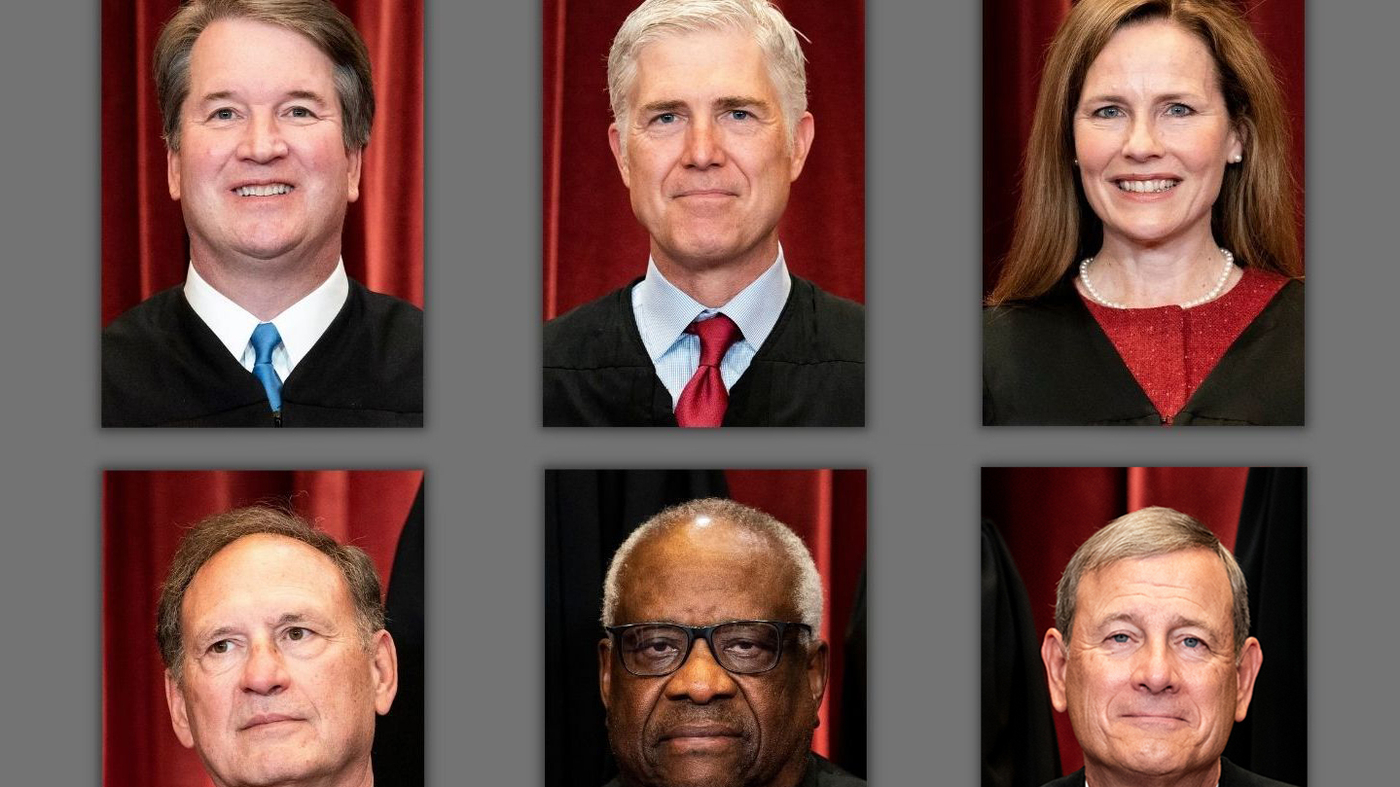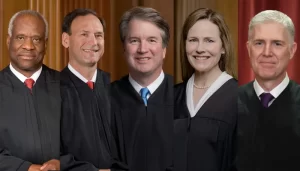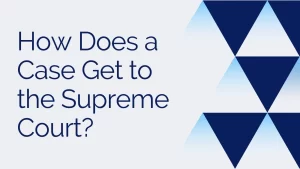Which Supreme Court Justices Are Conservative?
The current Supreme Court has a solid conservative majority, with 6 of the 9 justices appointed by Republican presidents. The conservative justices on the Supreme Court as of 2023 are:
Clarence Thomas
Appointed in 1991 by President George H.W. Bush, Clarence Thomas is considered the most conservative justice on the court. He believes strongly in following the original intent of the Constitution and often rules against expanding federal power. Thomas typically sides with conservative positions on issues like gun rights, campaign finance, and religious freedom.
Samuel Alito
Samuel Alito was nominated by President George W. Bush and has served on the Court since 2006. Known for his conservative judicial philosophy, Alito has ruled consistently against abortion rights, gay rights, and affirmative action policies. He also tends to side with law enforcement against criminal defendants.
Neil Gorsuch
Neil Gorsuch is a recent addition, appointed by President Trump in 2017. Gorsuch is an originalist and textualist, interpreting the Constitution based on the original public meaning of its text. He leans conservative on most issues, including religious freedom, gun rights, and immigration.
Brett Kavanaugh
The controversial confirmation of Brett Kavanaugh in 2018 cemented a solid conservative majority on the Court. Kavanaugh was Trump’s second appointee after Gorsuch. He is considered a conservative on issues like abortion and executive power but has occasionally sided with liberal justices as well.
Amy Coney Barrett
The newest justice, Amy Coney Barrett, was appointed by Trump in 2020 following Ruth Bader Ginsburg’s death. Barrett is considered strongly conservative based on her judicial record and her ties to the Federalist Society. She favors overturning precedent on issues like abortion rights.
Background on Conservative vs. Liberal Justices
Conservative and liberal justices differ significantly in their judicial philosophies and views on interpreting the Constitution.
Judicial Philosophy Differences
Conservatives believe in judicial restraint – strictly interpreting the Constitution based on its original meaning. Liberals believe in a more flexible “living Constitution” that evolves with the times.
Conservatives see their role as limited, deferring to the elected branches of government. Liberals take a more activist approach on issues like civil rights.
Views on Interpreting the Constitution
Conservatives look to the original intent of the Constitutional text and Framers. Liberals examine the broader principles behind the text and how they apply to modern society.
Conservatives oppose finding new rights not explicitly outlined in the Constitution. Liberals believe rights like privacy are implied by broader Constitutional principles.
Implications of a Conservative Majority
With 6 conservative justices, the current Supreme Court could make significant right-leaning rulings.
Potential Rulings on Key Issues
The conservative majority makes it likely the Court will overturn or weaken Roe v. Wade and abortion rights. Other precedents on issues like affirmative action and gun control could also be overturned.
The Court will likely expand religious freedom rights and limit government regulation of businesses. Rulings on voting rights, gerrymandering, and campaign finance reform will likely lean conservative as well.
Long-Term Impact on the Court
Some argue the current majority could fundamentally change jurisprudence on issues like abortion, civil rights, executive power, and federalism. The Court’s legitimacy could be threatened.
On the other hand,Chief Justice Roberts has occasionally sided with liberals and could moderate extreme rulings. Regardless, the conservative majority will likely last for decades.
Conclusion
The Supreme Court’s current 6-3 conservative majority is the product of recent Republican appointments. Justices like Thomas, Alito, Gorsuch, Kavanaugh, and Barrett take an originalist approach to the Constitution and lean right on most big issues. With their majority, the conservative bloc will likely shift American jurisprudence to the right for the foreseeable future.
FAQs
Who appointed the conservative justices? All the current conservative justices were appointed by Republican presidents – Thomas, Alito, and Barrett by George H.W. Bush, George W. Bush, and Trump; Gorsuch and Kavanaugh by Trump.
How long will the conservative majority last? The three oldest justices are Thomas (74), Alito (72), and Roberts (68). Barring unexpected events, the conservatives seem poised to maintain control for perhaps decades.
Could Roberts sway the Court to the left? As Chief Justice, Roberts could moderate some rulings, but he still largely votes conservative, so dramatic shifts left seem unlikely.
Who are the liberal justices? The three current liberal justices are Stephen Breyer, Sonia Sotomayor, and Elena Kagan. All three were appointed by Democratic presidents.
Does ideology perfectly predict rulings? No – factors like precedent and pragmatism can lead to surprises, but overall judicial ideology strongly influences rulings in big controversial cases.







